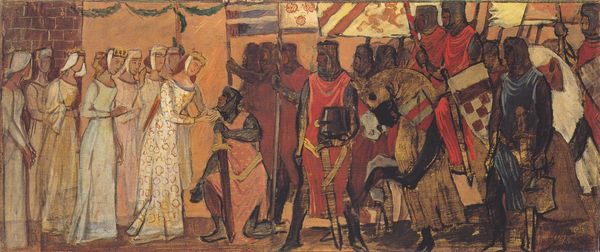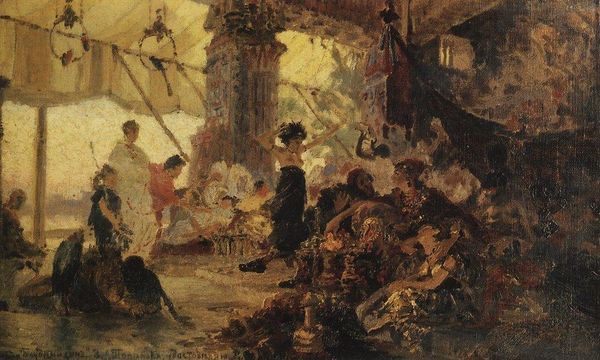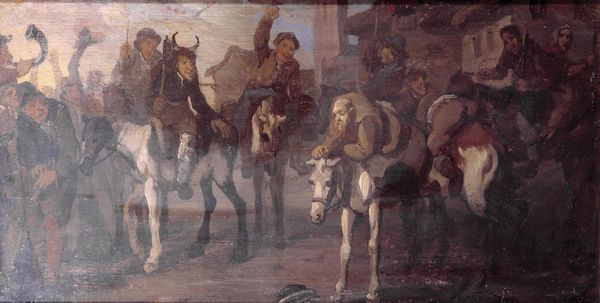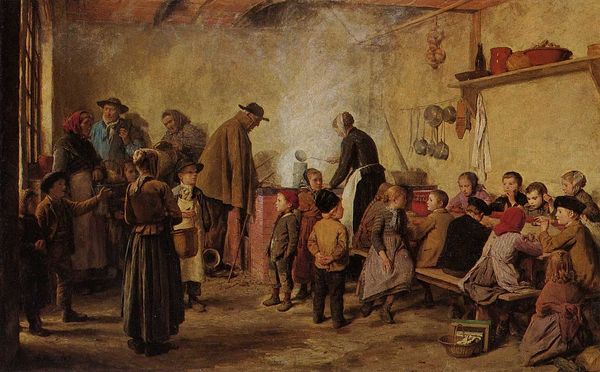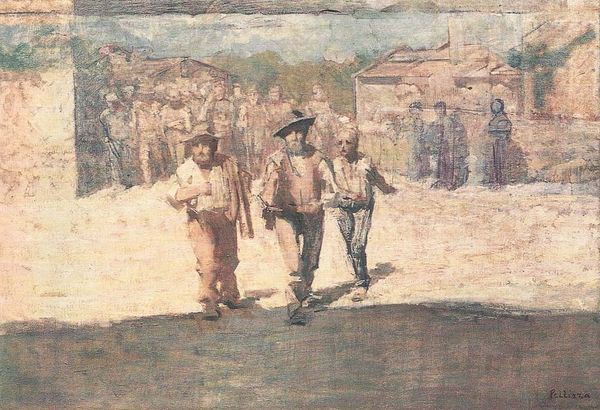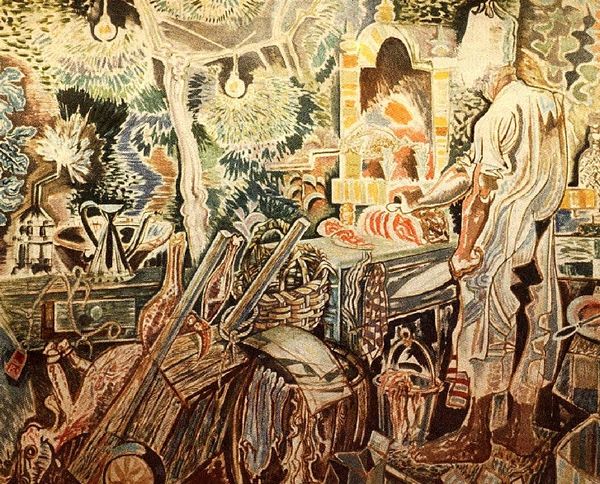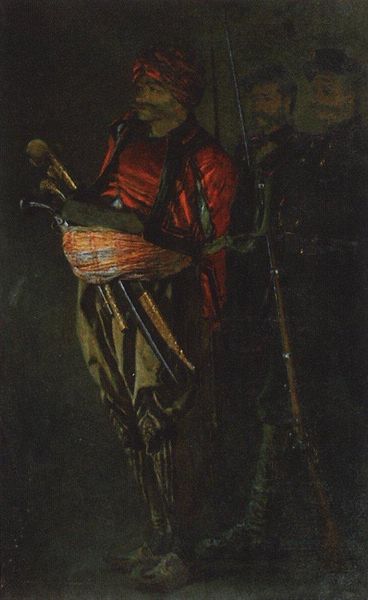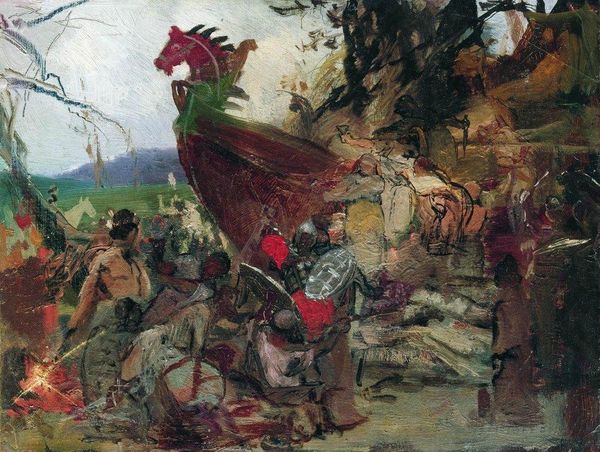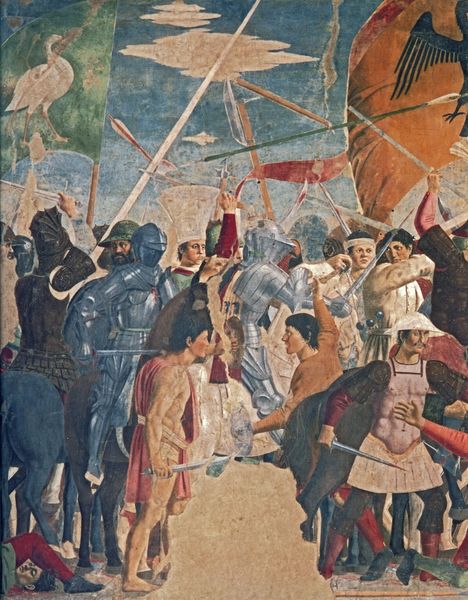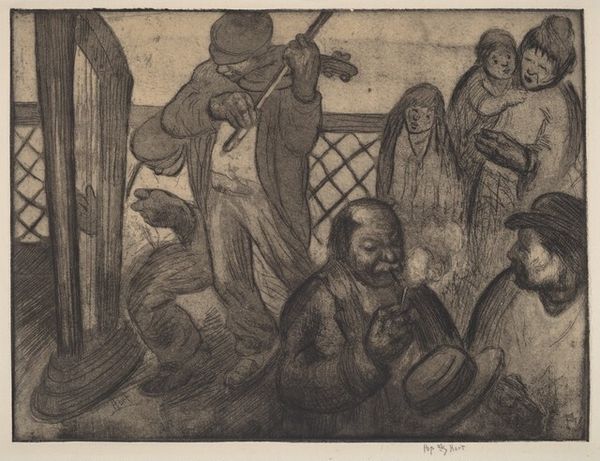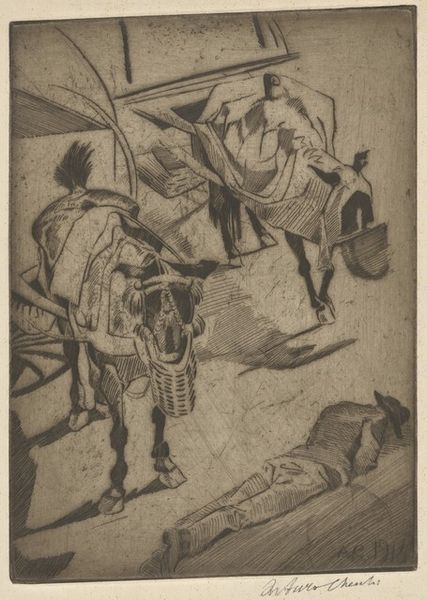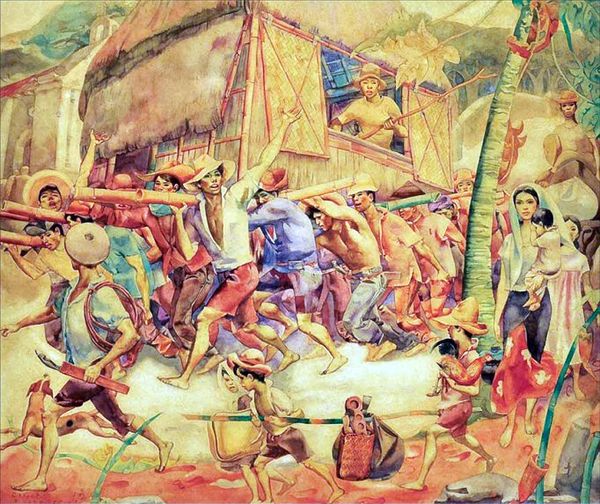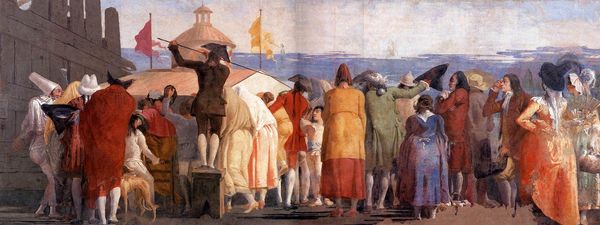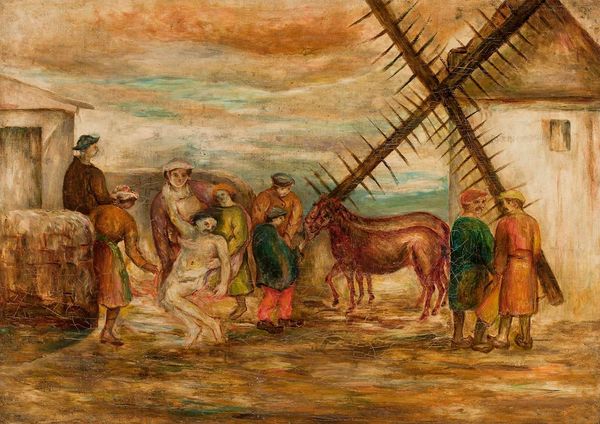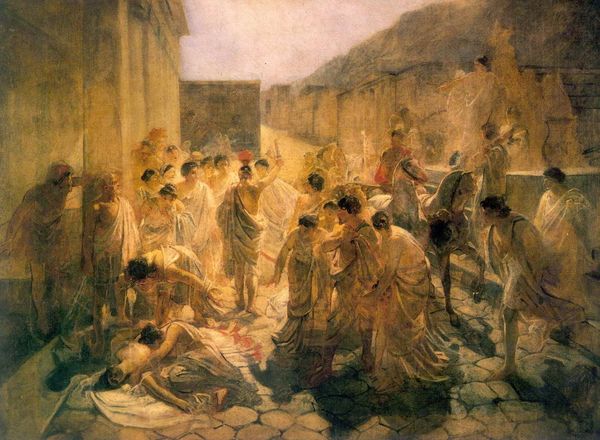
painting, oil-paint, impasto
#
gouache
#
narrative-art
#
painting
#
oil-paint
#
figuration
#
oil painting
#
impasto
#
symbolism
#
grotesque
Copyright: Public domain
Editor: Today we’re looking at James Ensor’s "Skeletons Fighting over a Hanged Man," painted in 1891. The Royal Museum of Fine Arts in Antwerp houses this unsettling oil painting. It’s definitely giving off some dark carnival vibes, wouldn’t you say? What is your initial reaction? Curator: You're spot on! Dark carnival is a great way to put it. To me, it’s a macabre puppet show – almost a dance of death frozen in time. The impasto gives everything a kind of tangible texture, like you could reach out and touch the decay. What do you make of the hanged figure, labeled "Civet?" Editor: Well, "Civet" has an odd, almost comedic expression, given the circumstances. The masks all around... it feels like Ensor is commenting on something. What do you think he's trying to convey with all these skeletons and grotesque figures? Curator: That's the million-dollar question! Ensor used masks a lot. They can be read as hiding true emotions, societal critique, or maybe a fascination with the absurd. The hanged man "Civet," could represent corruption, or the consequences of…well, perhaps, 'smelling bad'. I always thought that detail felt like a private joke of his! Does the title ‘fighting skeletons’ tell you anything? Editor: I do get the sense of commentary on the living by the dead! Thank you, this painting became clearer after learning about Ensor's intention of critique using bizarre elements. Curator: And for me, thinking of the absurdity, helps bring art into our own time. The painting lives when *we* bring it alive.
Comments
No comments
Be the first to comment and join the conversation on the ultimate creative platform.
